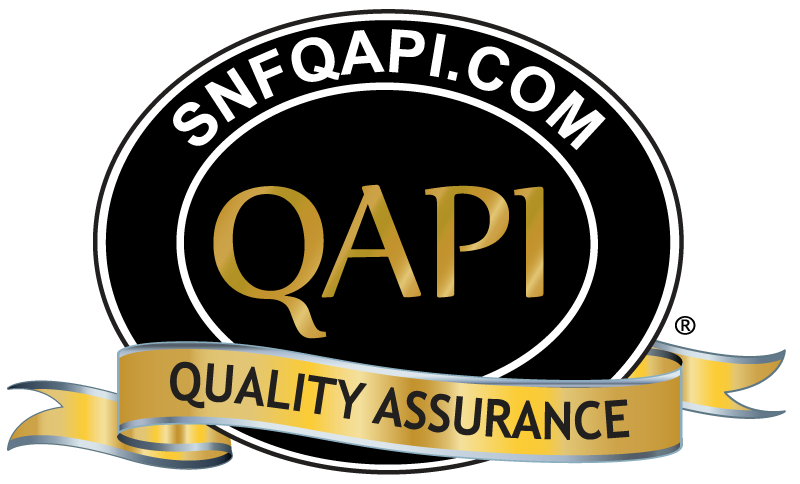Five Elements
Element 1: Design and Scope A QAPI program must be ongoing and comprehensive, dealing with the full range of services offered by the facility, including the full range of departments. When fully implemented, the program should address all systems of care and management practices, and should always include clinical care, quality of life, and resident choice. It aims for safety and high quality with all clinical interventions while emphasizing autonomy and choice in daily life for residents (or resident’s agents). It utilizes the best available evidence to define and measure goals. Nursing homes will have in place a written QAPI plan adhering to these principles.
Element 2: Governance and Leadership The governing body and/or administration of the nursing home develops and leads a QAPI program that involves leadership working with input from facility staff, as well as from residents and their families and/or representatives. The governing body assures the QAPI program is adequately resourced to conduct its work. This includes designating one or more persons to be accountable for QAPI; developing leadership and facility-wide training on QAPI; and ensuring staff time, equipment, and technical training as needed for QAPI. They are responsible for establishing policies to sustain the QAPI program despite changes in personnel and turnover. The governing body and executive leadership are also responsible for setting priorities for the QAPI program and building on the principles identified in the design and scope. The governing body and executive leadership are also responsible for setting expectations around safety, quality, rights, choice, and respect by balancing both a culture of safety and a culture of resident centered rights and choice. The governing body ensures that while staff are held accountable, there exists an atmosphere in which staff are encouraged to identify and report quality problems as well as opportunities for improvement.
Element 3: Feedback, Data Systems and Monitoring The facility puts in place systems to monitor care and services, drawing data from multiple sources. Feedback systems actively incorporate input from staff, residents, families, and others as appropriate. This element includes using Performance Indicators to monitor a wide range of care processes and outcomes, and reviewing findings against benchmarks and/or targets the facility has established for performance. It also includes tracking, investigating, and monitoring Adverse Events that must be investigated every time they occur, and action plans implemented to prevent recurrences.
Element 4: Performance Improvement Projects (PIPs) The facility conducts Performance Improvement Projects (PIPs) to examine and improve care or services in areas that are identified as needing attention. A PIP project typically is a concentrated effort on a particular problem in one area of the facility or facility wide; it involves gathering information systematically to clarify issues or problems, and intervening for improvements. PIPs are selected in areas important and meaningful for the specific type and scope of services unique to each facility.
Element 5: Systematic Analysis and Systemic Action The facility uses a systematic approach to determine when in-depth analysis is needed to fully understand the problem, its causes, and implications of a change. The facility uses a thorough and highly organized/ structured approach to determine whether and how identified problems may be caused or exacerbated by the way care and services are organized or delivered. Additionally, facilities will be expected to develop policies and procedures and demonstrate proficiency in the use of Root Cause Analysis. Systemic Actions look comprehensively across all involved systems to prevent future events and promote sustained improvement. This element includes a focus on continual learning and continuous improvement.
